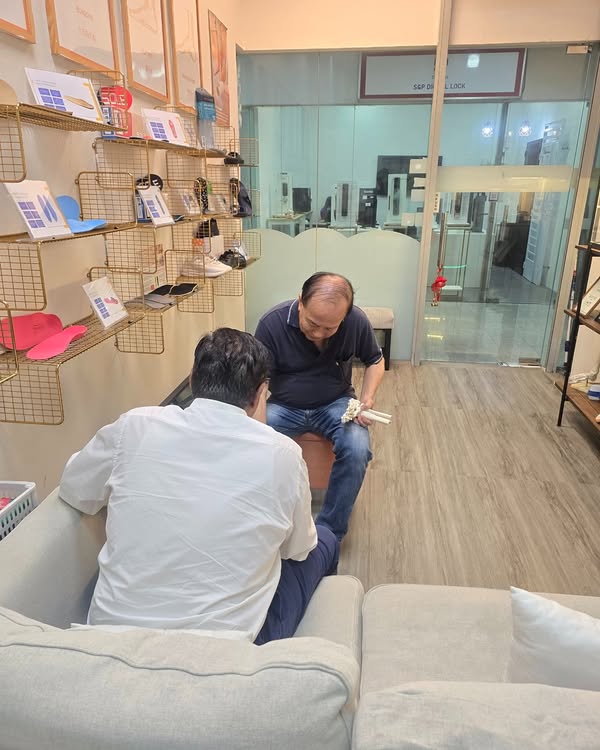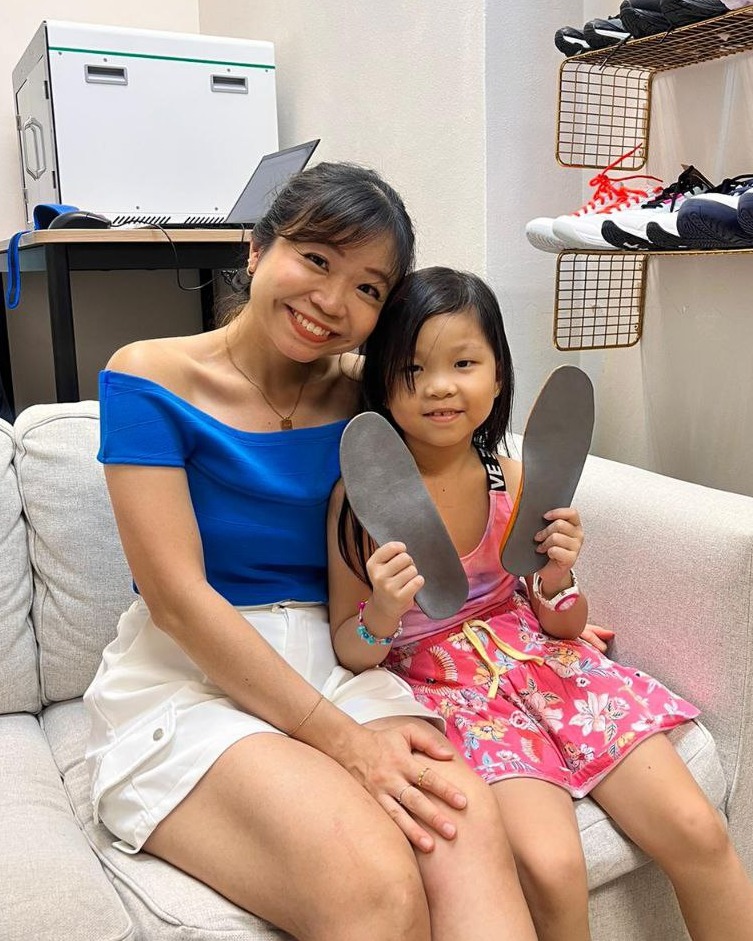Guide to Treating Achilles Tendonitis: Causes, Symptoms & the Best Recovery Tips
Introduction: Understanding Achilles Tendonitis & How to Fix It
If you’re experiencing sharp or burning heel pain—especially during your first few steps in the morning—you might be suffering from Achilles Tendonitis. This common condition affects active individuals, office workers, and even older adults whose tendons have weakened over time. The good news? With the right treatment plan, supportive insoles, and structured care, most people recover fully without surgery.
This guide walks you through everything you need to know: what causes Achilles Tendonitis, how to relieve pain fast, the best insoles and orthotics to support healing, and when to seek professional help.
What Is Achilles Tendonitis?
Achilles Tendonitis is an inflammation of the Achilles tendon—the thick band of tissue connecting your calf muscles to your heel bone. It is the largest tendon in your body and plays a vital role in walking, running, jumping, and climbing stairs.
Two main types:
- Non-insertional Achilles Tendonitis
Affects the middle portion of the tendon; more common in younger and active people. - Insertional Achilles Tendonitis
Affects the point where the tendon attaches to the heel bone; often associated with bone spurs.
Common Symptoms of Achilles Tendonitis
Look out for these signs:
- Heel pain or soreness along the Achilles tendon
- Stiffness in the morning or after long periods of rest
- Swelling around the back of the ankle
- Pain that worsens with activity
- Tight calf muscles
- A squeaking or creaking sensation (crepitus) when moving the tendon
If left untreated, tendonitis can progress to small tears—or even a rupture. Early treatment is essential.
What Causes Achilles Tendonitis?
1. Overuse and repetitive strain
Running, jumping, or even walking long distances can place stress on the tendon.
2. Tight calf muscles
When calves are inflexible, the tendon absorbs extra tension.
3. Poor foot biomechanics
Flat feet or high arches change how your heel absorbs impact—often overloading the Achilles.
Learn more about insoles for flat feet
4. Unsupportive footwear
Minimalist shoes, worn-out soles, or shoes with no heel cushioning increase tendon strain.
5. Sudden increase in activity
Common among new runners or “weekend warriors”.
6. Age-related degeneration
The tendon weakens naturally with age, making adults above 40 more susceptible.
Why Insoles & Orthotics Are Crucial for Achilles Tendonitis
One of the most overlooked factors in managing Achilles Tendonitis is proper foot support. Insoles and orthotics help you:
- Reduce strain on the Achilles tendon
- Improve foot alignment
- Absorb shock during walking
- Correct flat feet or high arches
- Prevent heel pain and future injury
At FeetCare Singapore, we regularly see customers experience faster recovery simply by switching to proper orthotic insoles.
Best Treatment Methods for Achilles Tendonitis
Below is a comprehensive treatment approach used by physiotherapists and sports doctors.
1. Rest & Activity Modification
Reduce high-impact activities such as:
- Running
- Jumping
- HIIT workouts
- Stair climbing
Replace them with:
- Cycling
- Swimming
- Rowing machine
Aim for relative rest—not complete immobility.
2. Ice Therapy
Apply ice to the painful area:
- 15–20 minutes
- 2–3 times daily
- Always wrap ice in a cloth to avoid skin damage
3. Targeted Stretching & Strengthening Exercises
Calf Stretch (30 seconds × 3 sets)
Loosens tight calf muscles that overload the tendon.
Eccentric Heel Drops (15 reps × 3 sets)
This is the gold standard exercise for Achilles Tendonitis.
It rebuilds tendon strength and restores elasticity.
Foam Rolling
Focus on calves to release tightness.
4. Supportive Orthotic Insoles
The right insoles can dramatically reduce pain by correcting biomechanics and giving the tendon space to heal.
Recommended features:
- Deep heel cup for stability
- Shock-absorbing heel cushioning
- Medium-to-firm arch support
- Slight heel lift (relieves tension on tendon)
Internal link idea: Explore FeetCare’s range of orthotic insoles in Singapore
5. Heel Lifts
A small 6–12 mm heel lift reduces the tendon’s stretching load.
Useful for acute flare-ups.
6. Proper Footwear
Choose shoes with:
- Good heel cushioning
- Supportive midsoles
- Slight heel-to-toe drop
Avoid:
- Worn-out running shoes
- Flat minimalist shoes
- Hard leather soles
7. Physiotherapy
A physiotherapist may use:
- Manual therapy
- Shockwave therapy
- Ultrasound
- Taping
- Soft tissue release
Shockwave therapy is especially effective for chronic cases.
8. Medication
NSAIDs (e.g., ibuprofen) may reduce inflammation, but should not replace rehabilitation exercises.
9. When to Consider Medical Intervention
Seek immediate medical help if:
- Pain persists beyond 12 weeks
- You hear a popping sound
- You cannot stand on toes
- The area swells significantly
- Walking becomes difficult
An MRI or ultrasound may be recommended.
Comparison Table: Different Treatments for Achilles Tendonitis
| Treatment Method | Benefits | Cost Level | Best For | Limitations |
|---|---|---|---|---|
| Orthotic Insoles | Reduces strain, improves alignment, supports heel | $$ | Everyday use, walking | Needs proper fit |
| Heel Lifts | Immediate pain relief | $ | Acute flare-ups | Temporary solution |
| Physiotherapy | Professional rehab, faster recovery | $$$ | Persistent or severe cases | Requires multiple sessions |
| Shockwave Therapy | Excellent for chronic tendonitis | $$$$ | Long-term injuries | Mild discomfort during treatment |
| Strengthening Exercises | Rebuilds tendon strength | $ (free) | All stages of recovery | Requires consistency |
| Supportive Footwear | Reduces impact and strain | $$ | Daily walking & sports | Must replace worn shoes regularly |
External Resources You May Find Helpful
- Mayo Clinic – Achilles Tendonitis Overview
https://www.mayoclinic.org - American Academy of Orthopaedic Surgeons (AAOS)
https://www.aaos.org
These resources provide additional medical insights on tendon-related injuries.
FAQ: Common Questions About Achilles Tendonitis
1. How long does Achilles Tendonitis take to heal?
Mild cases may improve within 1–2 weeks. Chronic cases can take 6–12 weeks with proper care.
2. Can insoles help Achilles Tendonitis?
Yes. Insoles stabilise the heel, reduce tension on the tendon, and correct foot mechanics—leading to faster recovery.
3. Should I continue running?
Avoid running until pain subsides. Switch to low-impact activities temporarily.
4. Do I need surgery?
Surgery is rare and usually reserved for severe or ruptured tendons.
5. Why does my heel hurt more in the morning?
Overnight, the tendon stiffens. This is a common symptom of Achilles Tendonitis and plantar fasciitis.
Final Tips for Preventing Achilles Tendonitis
- Warm up before exercise
- Strengthen your calves regularly
- Replace shoes every 500–800 km
- Use proper insoles if you have flat feet or high arches
- Avoid suddenly increasing workout intensity
Conclusion: Heal Your Achilles Tendonitis With the Right Support
Achilles Tendonitis is painful—but it is also treatable with the right combination of exercises, footwear, and supportive insoles. At FeetCare Singapore, we help thousands of people reduce heel pain and return to their active lifestyle safely.
If you’re experiencing pain or unsure which insole to choose, we’re here to help.
What can you do next?
👉 Visit FeetCare Singapore to find the best orthotic insoles for Achilles Tendonitis
👉 Book a free fitting consultation at our store
👉 Chat with our specialists for personalised recommendations




